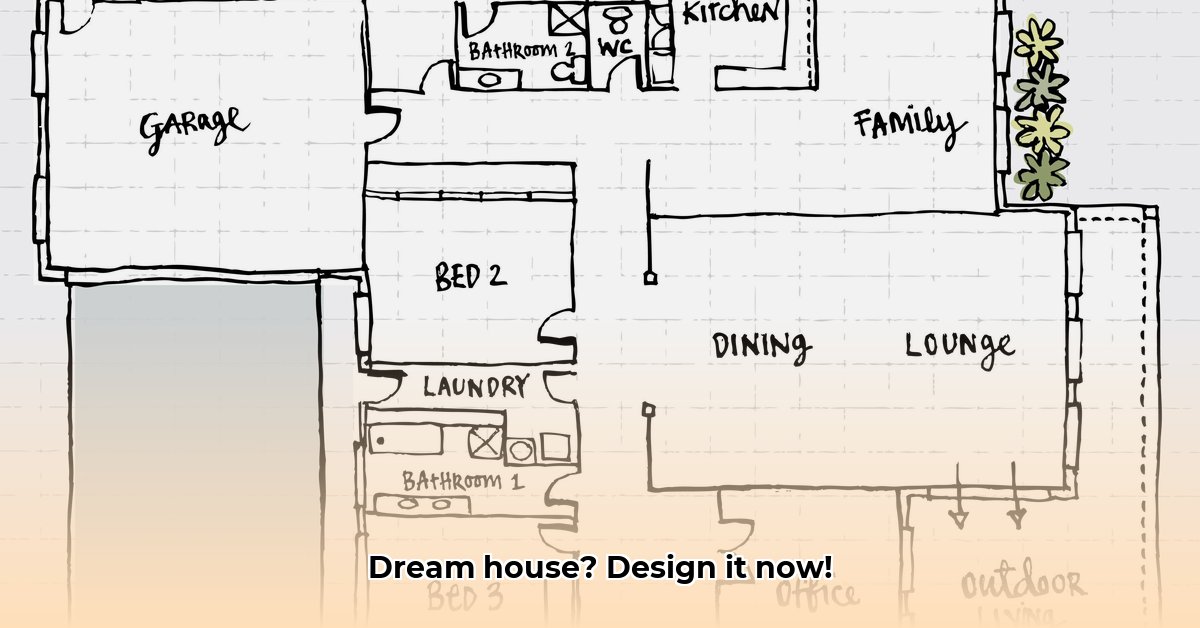Dreaming of building your own home? Finding the right house floor plan online can be overwhelming with so many websites and options available. This guide simplifies the process, showing you how to compare online marketplaces, understand key terms, and ultimately, find a plan that fits your budget and style. This step-by-step walkthrough will empower you to select the perfect floor plan and build the house you’ve always wanted. For a basic understanding of floor plans, check out this helpful resource: What is a Floor Plan?. Are you ready to bring your dream home to life?
Finding the Ideal House Plans Online: A Comprehensive Guide to Home Design
The internet is overflowing with house floor plans, but pinpointing the perfect one can feel like a complex task. Let’s simplify it. Do you want a budget-friendly, readily available floor plan, or are you looking for fully custom home designs tailored to your specific needs? That choice will heavily influence your selection process between online resources. Understanding architectural styles and regional building codes can further refine your search for the perfect home design.
Think of it like searching for clothes: you can find basic t-shirts anywhere, but discovering that perfect designer suit requires more specialized attention. The same holds true for house plans. Understanding the differences between various online providers is key to finding the best fit. Furthermore, understanding the different file formats (e.g., CAD, PDF) and their compatibility with various software will be beneficial.
Online House Plan Providers: A Detailed Overview
Many websites specialize in offering house plans, varying significantly in price and customization options. Navigating this landscape requires careful consideration of the key players. Remember, this market constantly evolves; comparing different options before deciding is always a worthwhile endeavor. What features are most important to you in a house plan? Consider factors like energy efficiency, smart home integration, and universal design principles for accessible living.
Here’s a comparison table to get you started:
| Platform | Price Range | Customization Options | Approximate Number of Plans | Customer Support Options | Key Features |
|---|---|---|---|---|---|
| Houseplans.com | Budget-friendly | Limited | 10,000+ | Email, Phone | Wide variety of styles, easy-to-use interface |
| MonsterHousePlans.com | Mid-range | Extensive | 30,000+ | Live Chat, Email, Phone | 3D modeling, modification services |
| ThePlanCollection.com | Premium | Extensive | 25,000+ | Email, Phone, Live Chat | High-quality visuals, eco-friendly designs |
| FamilyHomePlans.com | Budget-friendly | Moderate | 15,000+ | Focus on family-friendly layouts | |
| ArchitecturalDesigns.com | Premium | Extensive | 8,000+ | Email, Phone | Award-winning designs, luxury homes |
Note: The number of plans is an estimate and can fluctuate. The reliability of customer support is based on user reviews and can vary. Price ranges are relative and subject to change.
It’s not just about the sheer number of plans; a massive library is only useful if you can easily search and filter. Great customer service can be a lifesaver if you run into snags during the customization process or have questions about the plans. Consider factors like response time, expertise, and availability. The key is to find a balance between selection, usability, and support.
“Choosing the right floor plan is a critical step in building your dream home,” said [Sarah Miller, AIA, LEED AP], [Principal Architect] at [Sustainable Design Solutions]. “Careful consideration of your needs, budget, and local building codes will save you time and money in the long run.”
A Step-by-Step Guide to Finding Your Perfect Blueprint
Let’s break down how to pinpoint your ideal blueprint. Take your time with each step – rushing this process could lead to costly mistakes down the road. Selecting the right platform based on your individual needs and budget is crucial. Remember to factor in potential future needs, such as a growing family or aging in place.
Step 1: Define Your Needs and Dreams: Before even looking at plans, get crystal clear on what you want. What’s your budget? How many bedrooms and baths do you need? What style of home are you envisioning (ranch, Victorian, modern, etc.)? What are your lifestyle priorities (e.g., home office, outdoor living space)? Even sketching out a rough idea of your ideal layout can greatly improve your search. Defining your needs early ensures a more efficient and effective search. Consider creating a mood board with images of homes and features that inspire you.
Step 2: Choose the Right Platform: Use the table above to narrow down your choices based on your budget and how much customization you need. Read reviews from other users; they often share valuable insights you won’t find elsewhere. Look for reviews on independent websites and forums. Customer reviews provide valuable real-world perspectives on platform usability and customer support. Also, consider the platform’s reputation and history.
Step 3: Explore the Plan Library: Use the search filters on your chosen platform! Filter by square footage, number of rooms, architectural styles, energy efficiency features, and any other important criteria. Don’t just look at pictures—carefully read the plan descriptions and specifications. Check for details like ceiling heights, window sizes, and construction materials. Utilizing search filters effectively can save time and prevent you from getting overwhelmed by the sheer number of options.
Step 4: Scrutinize the Details: Understand the pricing, any extra fees for customizations, and their revision policies. Hidden costs can quickly derail a budget. Transparency in pricing and customization policies is essential. Pay close attention to the fine print and ask questions about anything that is unclear.
Step 5: Customize (If Needed): Many reputable services offer modification options, but find out their cost and what kind of changes are possible. Some may charge extra for significant alterations. Discuss your customization needs with the platform’s design team to ensure feasibility and cost-effectiveness. Knowing the customization limitations and associated costs upfront prevents surprises.
Step 6: Download and Verify: Once you’re completely happy with your choice, download the blueprints. And this is crucial: make sure the plans comply with your local building codes and zoning regulations. You may want to consult with a local building professional or code official to double-check for any potential compliance issues before you proceed with your project. Verify that the plans include all necessary information for permitting and construction. Verifying compliance with local building codes ensures your project stays on track and avoids potential legal issues.
House Plan Jargon: Decoding the Terminology
Getting familiar with common terms like square footage (the total area of a space), net and gross living area (net excludes garages and other non-living areas), floor area ratio (FAR), setbacks, easements, and different architectural styles will greatly improve your search efficiency. Understanding terms like “universal design,” “passive solar design,” and “green building” will also be helpful if you are interested in sustainable features. What is the importance of understanding house plan terminology? This upfront knowledge will save you time and possibly prevent costly errors later.
Minimizing Risks in Your Home Building Process
While finding house plans online is convenient, there are some potential pitfalls. Always carefully review the blueprints for accuracy and ensure they comply with building codes in your area. Choose platforms with transparent security and privacy policies. Check the platform’s data security measures and read their terms of service carefully. Create a realistic budget and stick to it to prevent unforeseen expenses. Factor in costs for land preparation, permits, materials, labor, and potential overruns. Thorough research and a careful approach will minimize risks and ensure a smooth process. Remember, a little preparation goes a long way! Did you know that careful planning and budgeting can reduce construction costs by up to 15%?
The Best Online House Plan Platform: Tailoring Designs
- The online house plan market offers diverse options for various needs and budgets, ensuring the right fit for every project.
- Free tools suffice for basic needs, while professionals benefit from advanced features found in paid subscriptions, offering flexibility and scalability.
- Ease of use and an intuitive interface simplifies the design process, saving time and reducing frustration.
The Online House Plan Landscape
Choosing the right online platform for your custom house plan is like choosing the right tool for a job. A simple project might only need a basic hammer, while a complex build requires more specialized equipment. Similarly, how to choose the best online house plan platform for custom designs depends on your skill level, budget, project needs, and long-term goals. Are you planning to build a vacation home, a starter home, or a forever home?
Some platforms offer free tools sufficient for simple sketches and basic floor plans. Others provide comprehensive suites with advanced 3D modeling and rendering capabilities, as well as collaboration tools, usually at a price. Consider your familiarity with design software and your willingness to learn new software. A simple interface might be perfect for a novice, whereas experienced users might prefer advanced features and greater control.
Essential Factors When Choosing a Platform
Before diving in, consider these key aspects for your custom home planning:
- Budget: Free platforms often have limitations in terms of features, design options, and support. Paid subscriptions unlock advanced features, larger design libraries, and priority support. Determine your budget upfront, including potential costs for customizations and revisions. Sticking
- Gray Kitchen Backsplash Ideas: Find Your Perfect Gray Tile - December 11, 2025
- Glass Wall Tiles For Bathroom: A Stylish, Durable Choice - December 10, 2025
- Glass Mosaic Kitchen Backsplash: Add Shimmer and Style - December 9, 2025









